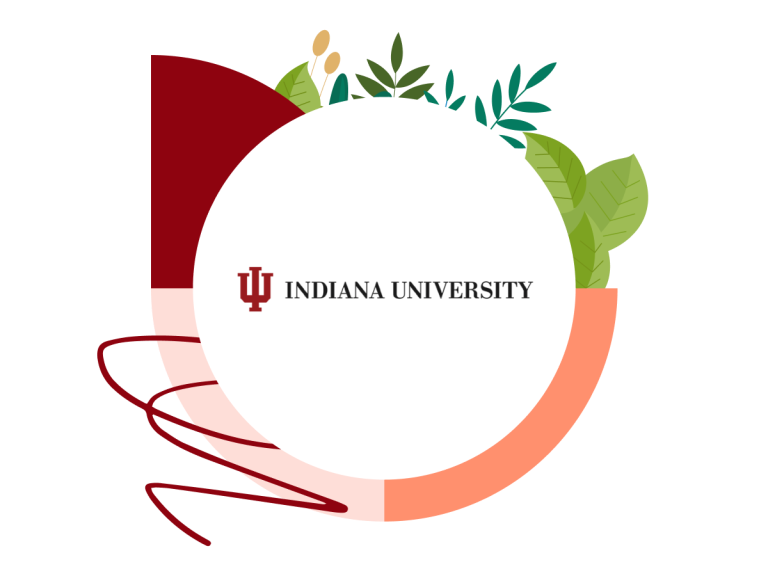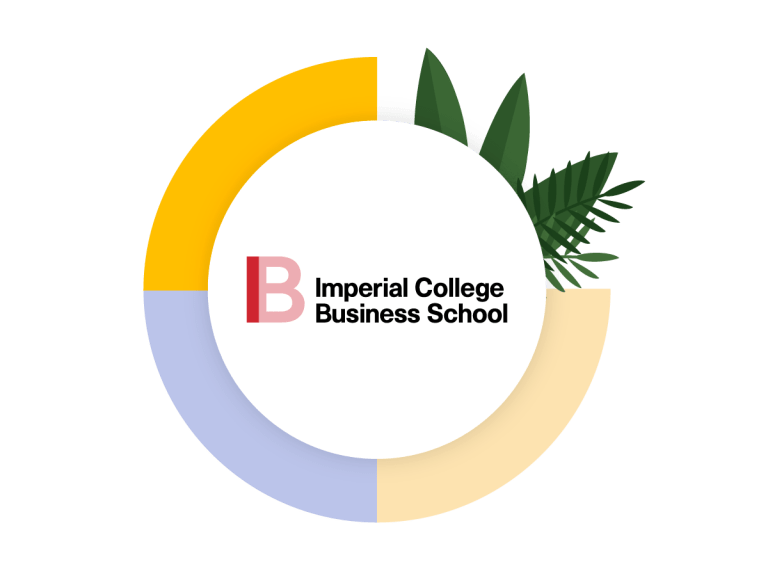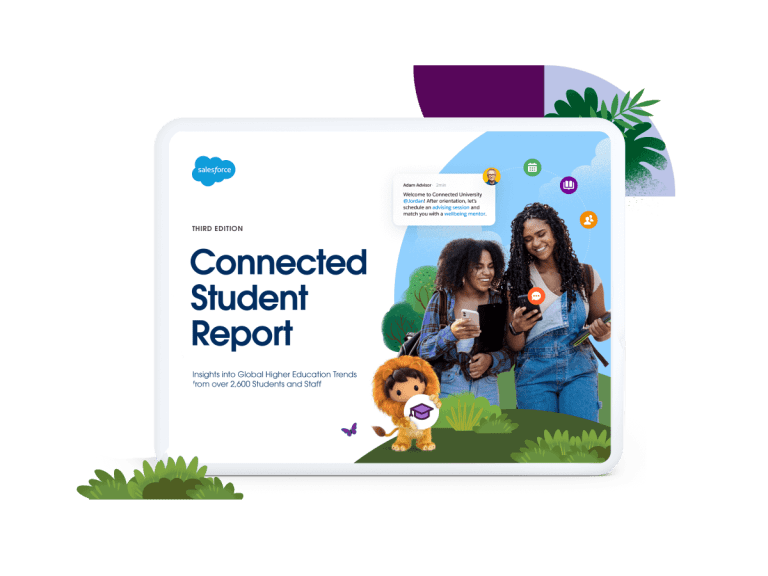Enrollment is one of the most important elements for higher education institutions. The number of enrolled students determines many things, such as how many dorm rooms need to be available or how many professors a university needs to hire. In essence, it impacts budgeting decisions across campus. Understanding the admissions funnel — the steps prospective students take in their enrollment journey — is vital for developing strategies that turn potential students into enrolled ones. Universities can identify and deploy targeted outreach tactics to improve enrollment rates depending on where a prospect is in the admissions funnel.
The rapidly changing landscape of admissions
The admissions process is more complex and competitive than ever before. Changes in society, technology, and student needs mean universities need to find ways to innovate in order to thrive. A key area of focus for innovation must start with the first point of contact for students — the enrollment process. But before we dive into the enrollment funnel and how you can maximize its effectiveness, let’s take a closer look at what’s influencing the changes in the admissions process today.
- Student enrollment is down
Student enrollment declined by 4.1% between spring 2021 to 2022, according to the National Student Clearinghouse. With rising college costs, increasing alternative higher ed programs online, and shifting attitudes towards higher education, institutions face an uphill battle when it comes to increasing enrollment numbers. However, the third edition of the Connected Student Report revealed that nearly half of students surveyed say they chose their institution based on career prospects. Students want to know if the investment will pay off. The good news? A degree remains one of the best ways to improve their future income. According to data from the U.S. Bureau of Labor Statistics, those with a higher education get paid more and are less likely to be unemployed. Hence why showcasing the value of a degree is crucial during the admissions process.
- Students are starting their university search earlier
Today, the admissions recruitment funnel is longer and more complex than ever. Nearly 40% of surveyed students say they began their university search between eighth and tenth grade, according to Salesforce’s Adopting a Student-Centric Approach to Higher Ed Marketing report. Historically, most students were not thinking about their search or the process until they were in the latter part of high school. This means prospects are now entering the top of the admission funnel sooner. To keep them engaged and moving down the funnel, institutions must compile various data points to understand their needs. This helps in knowing how best (and when) to address their changing priorities as well as their pain points in the admissions process.
- Students have access to a trove of information online
From university rankings to social media posts to course reviews, prospects have access to vast amounts of information about a university before their first campus visit. These resources can be a powerful tool in shaping the identity and brand of a university, helping solidify interests in prospects. And in today’s highly competitive enrollment environment, universities must utilize every digital engagement channel to stand out. A multi-dimensional digital approach is needed to drive leads to the top of the funnel.

5 Student Recruitment Strategies for Higher Education
Learn how to make your university stand out to prospective students.
What is the admissions funnel?
Having looked at the admissions landscape, it is also important to look at the admissions funnel in detail. The admissions funnel is the steps prospective students take in their enrollment journey. It could be thought of as a guide for recruitment efforts, helping enrollment managers better assess how to interact with potential students. Different strategies need to be deployed based on where they are in the funnel. The end goal is to turn the right potential students into enrolled ones. There are six main steps:
- Prospects are prospective students who haven’t actively engaged with a university yet but are brought to the top of the funnel through recruitment strategies (university fairs, direct student outreach, referral programs, etc.).
- Inquiries are prospects who have actively engaged with a university by signing up for a newsletter, visiting the campus, or calling for more information. Beginning personalized engagement at this stage is important because it is the make-or-break moment for the prospect to determine the compatibility of their needs and a university’s offerings.
- Applicants are those who’ve applied for admission to a university. The application rate — the percentage of students who go from an inquiry to an applicant — is determined here.
- Acceptees are prospective students who’ve been accepted to a university based on meeting certain requirements. The admission rate — the percentage of applicants accepted into a program — is determined here.
- Deposits are accepted students who’ve submitted a financial deposit or payment to reserve their spot. The yield rate — the percentage of admits who submit a deposit — is determined here.
- Enrolls are students who have completed student orientation and are enrolled in classes.
Those six steps can then be broken down into three corresponding stages in the student enrollment journey.
- Top of the funnel (TOFU): At this stage, prospects and inquiries are likely just beginning their search and are identifying several universities that spark their interest. This is called the awareness stage of the student journey since prospects gather broad information from various sources.
- Middle of the funnel (MOFU): This is the consideration stage because although applicants and acceptances have applied and been accepted, they haven’t necessarily committed to attending. Prospects have likely applied to several institutions and are still weighing their options, which is why nurturing prospects is important at this stage.
- Bottom of the funnel (BOFU): Deposits and enrolls are in the decision stage and have committed to a specific institution. However, “melt” is a concern here. This is when students commit in the spring and “melt” over the summer, ultimately not showing up for classes in the fall semester. Nurturing BOFU students and minimizing melt should be a key part of enrollment efforts.

“Before, so much of the information on the recruitment process was hidden in core systems or departmental systems. There wasn’t uniformity of information. Now we have that holistic view of the recruitment process. That personal engagement information makes us a lot more effective.”
— Terry Brown, Associate Director of Admissions for Marketing and Recruitment Communications at the Indiana University – Purdue University Indianapolis
Strategies to maximize the effectiveness of the admissions funnel
Ultimately, analyzing the admissions funnel helps map the timeline and key decision points for prospective students. At each point, it is important to identify the student’s needs and deliver key messages to address them. Here are strategies to help identify and act on those key points.
The top of the admissions funnel
Prospects
This stage involves bringing prospects — or leads in marketing — to the top of the funnel. Traditional tactics include hosting university fairs, visiting high schools, and recruiting students (perhaps for academic or athletic excellence). Leads can be increased with a multi-dimensional digital approach. This includes:
- Improving search engine optimization (SEO) ranking by creating original content for institutional websites (blogs, videos, etc.).
- Harnessing the power of social media with digital campaigns (alum success stories, day-in-the-life of a student series, etc.).
- Advertising campaigns on search engines.
Recruiting leads works best when there is a mix of both traditional and digital tactics. Brand awareness is also important at this stage. An institution’s brand must be easy to identify, and visuals, logos and color schemes should be predictable. For copy, voice and tone need to align across every platform. Brand consistency is important in digital marketing.
Inquiries
Inquiries have engaged with an institution by, for example, signing up for a newsletter or calling in for information. At this stage, it’s essential to use each engagement to gather valuable data on prospects. What programs are they interested in? Are they concerned about paying for their education? Are they a parent who works full-time and needs flexible class scheduling? The goal is to deliver personalized messaging that showcases an institution’s offerings to meet their needs. So what’s the best way to do that? Email marketing for higher education is still top of the list. More than 55% of students prefer email content from higher education institutions, according to the Connected Student Report.
To deliver personalized emails, institutions must compile data into a single truth source to build personas around different demographics. A customer relationship management (CRM) platform can help keep track of every engagement and provide every department, specifically the enrollment team, with a complete overview of each prospect and their needs. A marketing platform integrated with CRM can create personas, segments, and automatically run targeted email campaigns so enrollment staff can focus on nurturing prospects, not administrative tasks.

“If a prospective candidate requests a call back, downloads a brochure, uses live chat, subscribes to a newsletter, or adds an event to their calendar, all that data is logged to their record so the team can have a more comprehensive understanding of the candidate’s needs and more relevant conversations as they work to support the applicant.”
— Alexandros Toulis, Salesforce Administrator at Imperial College Business School
The middle of the admissions funnel
Applicants
If a prospect believes a university is the right fit, they will likely move to the consideration stage and begin the application process. Here, it is critical to focus on the ease of applying. This can be done by:
- Using an online application platform to simplify the process
- Sending email alerts (for example, when documents are missing, a signature is required, or an application is complete)
- Utilizing chatbots to help answer questions, regardless of time or time zone
Chatbots go beyond simply answering questions. These interactions can be tracked in the CRM and recruitment staff can be notified on which applicants may need additional one-to-one support. By proactively reaching out, universities can instill trust. This is important because prospects usually apply to several institutions during this stage and are still determining where they will ultimately matriculate.
Acceptees
Even if an applicant is accepted, it is still important to nurture prospects at this point of the enrollment funnel. Institutions should affirm that they can provide the best environment for them to succeed — both inside and outside the classroom. This can be done by offering ways for them to engage with current students, faculty, and alums. Sending emails about upcoming events like admitted student campus visit days, class visit days (where students can sit in on actual classes), community volunteer days, and virtual Q&A sessions can help steer applicants towards the deposit stage of the funnel. These events can foster a sense of belonging early on, which is critical since 46% of students who feel connected to the student or alumni community also have a great university experience.
The bottom of the admissions funnel
- Minimizing “melt” for deposits and enrolls
According to the Adopting a Student-Centric Approach to Higher Ed Marketing report, nearly 30% of students indicated that how their chosen university communicated with them after enrollment did not make them feel as valued as the communication they’d received during recruitment. It’s important to continue communicating and delivering personalized messages during this stage to avoid prospects from “melting” or withdrawing. Some ideas to prevent this include sending messages on:
- Joining virtual career planning events with alums.
- Enrolling in a buddy system, where a current student is paired with an enrolled student to help ease the adjustment to university life.
- Participating in a neighborhood tour where enrolls can get familiar with the surrounding area.
- Scheduling one-on-one appointments with academic and financial advisors.
Student orientation is also an important time. Students with a great onboarding experience are 35 times more likely to have a great university experience. That’s why London Metropolitan University — where most of their enrolls are first-generation students — provides “preparedness roadmaps.” It gives students guidance on personal and academic things they may need, including finding local cafes or obtaining laboratory coats for science courses. Holistic support from application to enrollment is key to building a solid foundation for student success.

Students who have a great onboarding experience are 35 times more likely to have a great university experience.
A finely tuned enrollment funnel is a crucial marketing strategy to help universities understand the needs of their prospective students and how to meet them effectively. From identifying potential leads to creating targeted personas to streamlining the application process, providing a personalized experience for each student is crucial for success, no matter where they are in the admissions funnel. To achieve this, however, the appropriate strategy and tools must be in place.
Salesforce Student 360 can maximize the effectiveness of your admissions office. It helps find students on their preferred channels, simplifies the application and onboarding process, and automatically provides personalized engagement for each prospective student.
